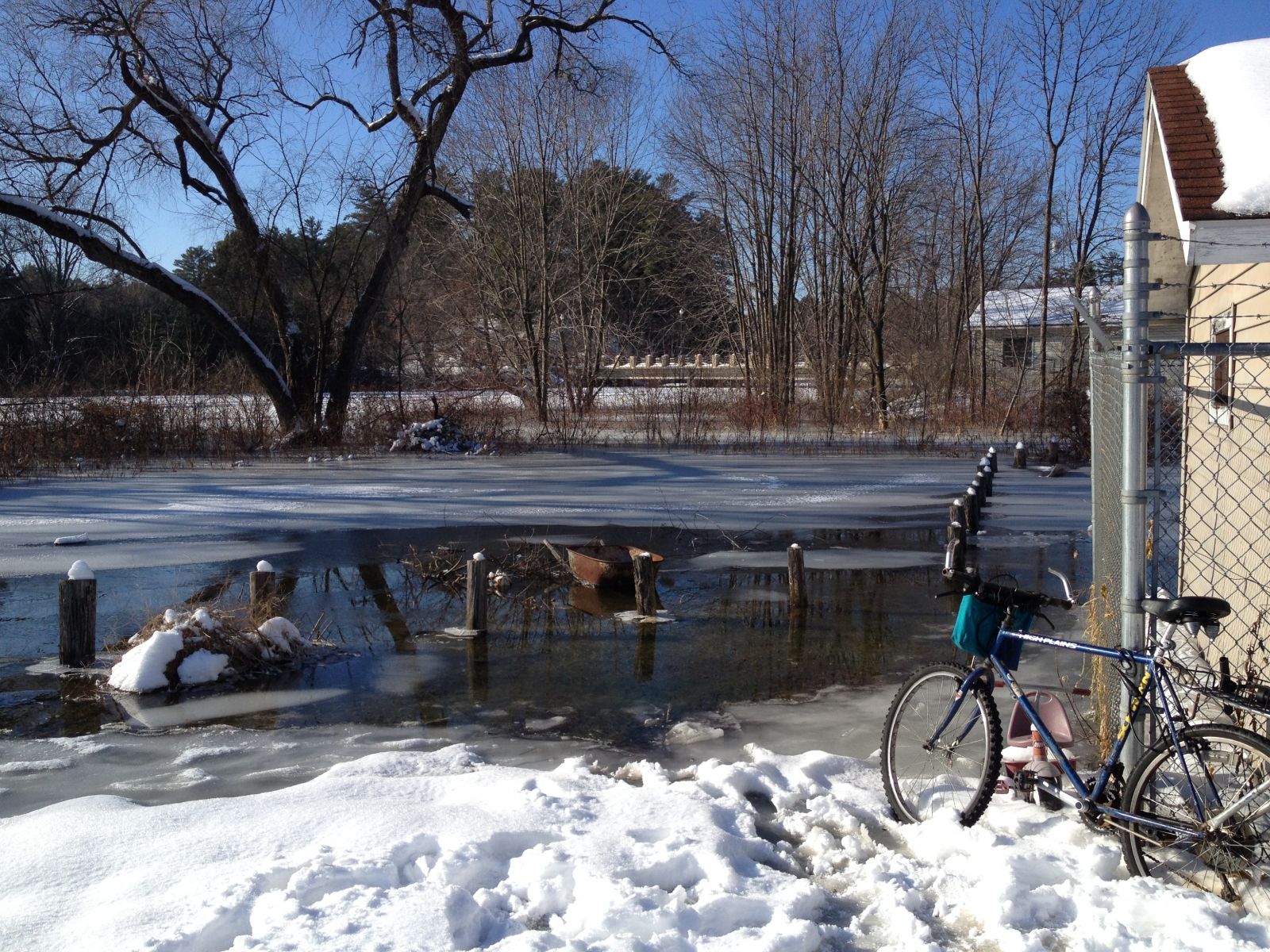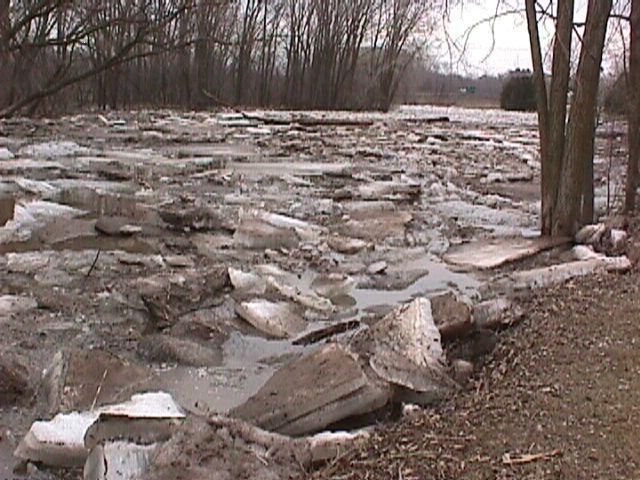|
Ice jams may result in flooding on some rivers and creeks across northeast Wisconsin this winter and spring. Normally the greatest threat of ice jams occurs in late winter or early spring during the ice breakup. However prior to the 2015-16 winter season, above normal rains, including in December, have produced above normal flows, so ice jams will be possibe at any time this winter. The National Weather Service advises that if you come upon a flooded roadway, turn around, don’t drown! If you live along streams prone to ice jams, you should continue to closely monitor river levels and listen for possible flood statements or warnings. When an ice jam forms, water can rise several feet in just minutes compared to hours or days in a normal river flood. You may have little time to take action. Also, do not attempt to drive around barricades placed at flooded roads. It only takes as little as two feet of flowing water to float many vehicles. More than half of all flood-related fatalities are a result of individuals attempting to drive through a flooded roadway. If you see an ice jam, please report it to local law enforcement or to the National Weather Service in Green Bay.
What is an ice jam? An ice jam is a stationary accumulation of ice that restricts flow. Cold snaps followed by a thaw and/or rain can lead to this potentially significant hazard developing along area rivers and creeks. Snow melt, combined with rains can cause frozen rivers to swell, which breaks the ice layer on top of the river. The ice layer often breaks into large chunks, which float downstream and often pile up near narrow passages in the river as well as near bridges, dams and bends in the river. Please see the river ice guide below for photos and definitions of the different kinds of river ice formations. Most ice jams are minor, briefly producing a modest rise in the water upstream with a minor release of water when the ice breaks loose. But some ice jams can produce significant damming of the water producing flooding upstream, followed with the sudden release of a flash flood of water when the ice finally gives way. Here are some examples of ice jams from northeast Wisconsin:
|
 |
 |
|
Ice jam flooding on the Wolf River in Menominee County |
Minor ice jam on Duck Creek in Brown County in the |
|
River Ice Guide |
| Anchor ice: Submerged ice attached or anchored to the river bed, regardless of the nature of its formation. Border ice: Ice formed along and fastened to the shore. Border ice does not extend across the entire width of the river. Also called shore ice. Breakup jam: Accumulation of broken ice pieces that restrict the flow of water; may contain frazil ice or remnants of freezeup jam. Candled ice: Decayed sheet ice that assumes the appearance of thin vertical crystals shaped like candles. Frazil ice: Fine, small, needle-like structures or thin, flat, circular plates of ice suspended in water. In rivers and lakes it is formed in supercooled, turbulent water. Freezeup jam: Accumulation of frazil that restricts the flow of water; may contain some broken border-ice pieces. Pancake ice: Circular, flat pieces composed of frazil and slush ice with a raised rim; the shape and rim are due to repeated collisions. Shear walls: Ice left along shoreline when a freezeup or breakup jam fails and moves downstream. Sheet ice: A smooth, continuous ice cover formed by freezing in the case of lake ice, or by the arrest and juxtaposition of ice floes in a single layer in the case of river ice. Slope change: A change in the slope of the river. Typical examples occur where two rivers meet, and at the upstream end of a dam or reservoir pool. Slush ice: A floating agglomeration of loosely packed frazil ice that remains separate or only slightly frozen together. |